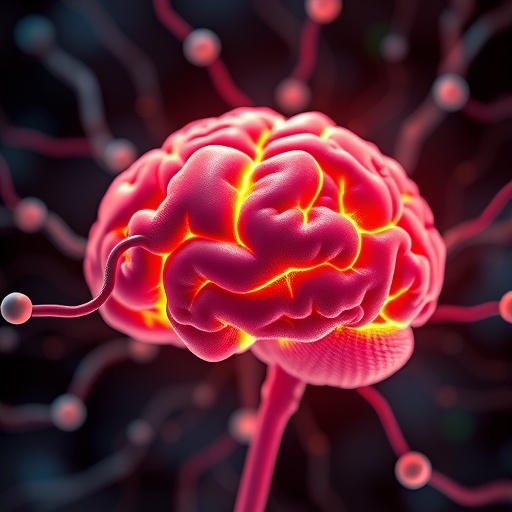In a groundbreaking study that reshapes our understanding of neuronal metabolism, researchers have unveiled the pivotal role of DDHD2 in regulating the supply of saturated fatty acids essential for brain energy and function. This discovery holds immense significance as it elucidates a critical metabolic pathway that sustains neuronal vitality and cognitive performance. The findings, recently published in Nature Metabolism, reveal intricate biochemical mechanisms that connect lipid metabolism directly with neuronal energy homeostasis, offering tantalizing clues to new therapeutic targets for neurodegenerative diseases and cognitive disorders.
Neurons, the fundamental units of the brain, are notorious for their extraordinary energy demands, requiring a continuous and robust supply of metabolic substrates to maintain synaptic transmission, plasticity, and cellular homeostasis. While glucose has long been emphasized as the brain’s primary energy source, emerging evidence suggests that fatty acids, particularly saturated fatty acids (SFAs), also serve critical functions in neuronal energy metabolism. The study’s lead investigators focused on the enzyme DDHD2, a serine hydrolase, as a potential regulator that facilitates the mobilization and trafficking of these SFAs within neurons.
Through meticulous biochemical assays, advanced imaging techniques, and genetically engineered mouse models, the researchers demonstrated that DDHD2 acts within the endoplasmic reticulum and lipid droplet interfaces to catalyze the release and flux of saturated fatty acids. This enzymatic activity ensures a steady availability of SFAs, which neurons can oxidize in the mitochondria to generate ATP. Intriguingly, the study elucidates how disruption of DDHD2’s function leads to marked deficits in neuronal energy production, culminating in impaired synaptic activity and cognitive decline.
One of the pivotal revelations was the identification of DDHD2 as a gatekeeper controlling saturated fatty acid flux from lipid storage organelles to mitochondrial compartments. The researchers used isotopic labeling and lipidomics profiling to trace fatty acid trajectories, affirming that DDHD2’s enzymatic action is indispensable for maintaining the balance between lipid storage and energy utilization. The absence or mutation of DDHD2 skewed this balance, resulting in lipid accumulation and neuronal energetic insufficiency, which could provide a molecular link to neurodegenerative pathologies characterized by lipid dysregulation.
The investigation also revealed compelling evidence that DDHD2’s activity is tightly regulated by neuronal activity and metabolic state. When neurons are depolarized or subjected to energy stress, DDHD2’s function is upregulated, enhancing fatty acid mobilization to meet immediate energetic needs. This dynamic regulation underscores the enzyme’s versatility and integral role in fine-tuning neuronal metabolism in real time, accommodating fluctuating energetic demands characteristic of brain activity.
Furthermore, the scientists reported that the flux of saturated fatty acids mediated by DDHD2 is crucial not only for energy generation but also for sustaining membrane lipid composition, impacting synaptic vesicle turnover and neurotransmission efficiency. The loss of DDHD2 function correlated with altered phospholipid profiles in neuronal membranes, impairing vesicle fusion and synaptic signaling. This reveals an unexpected dual role of DDHD2 in supporting both bioenergetic and structural demands of neurons.
The research team extended their findings to disease models where mutations in DDHD2 have been implicated in hereditary spastic paraplegia, a debilitating neurodegenerative disorder. Their work showed that the pathogenic variants compromise fatty acid flux, contributing to neuronal energy deficits and cumulative neurological dysfunction. This connection opens avenues for therapeutic interventions aimed at restoring lipid metabolism and energy balance in affected individuals.
The study’s innovative approach employed multi-omic analyses—integrating genomics, proteomics, and metabolomics—to map the metabolic networks downstream of DDHD2 activity. This holistic view revealed that DDHD2-dependent saturated fatty acid trafficking modulates broader metabolic pathways, including fatty acid β-oxidation and the tricarboxylic acid (TCA) cycle. Such insights highlight the enzyme’s central position in the metabolic web that sustains neuronal survival and performance.
Remarkably, the researchers found that pharmacological activation of DDHD2 or enhancement of its fatty acid mobilization capacity could rescue energy deficits in neuronal cultures deficient in the enzyme. This finding holds transformative potential for drug discovery efforts, providing a molecular target to bolster neuronal metabolism and counteract energy failure seen in many neurodegenerative conditions.
Beyond the brain-specific implications, the study sheds light on broader biological principles governing lipid metabolism and energy homeostasis in highly specialized cells. It challenges the previous dogma that predominantly viewed saturated fatty acids as metabolic liabilities, clarifying their indispensable role in neuronal energy flux and signal transduction.
The elucidation of DDHD2’s mechanistic role opens unprecedented possibilities for exploring how metabolic and lipid pathways intersect with neuronal functionality. It prompts a re-examination of dietary and pharmacologic strategies designed to modulate brain lipid metabolism, potentially influencing cognitive health and aging trajectories.
In summary, this comprehensive investigation establishes DDHD2 as a critical enzymatic mediator ensuring the flux of saturated fatty acids for neuronal energy and function. By delineating how this enzyme supports mitochondrial ATP production and membrane dynamics, the study provides valuable insights that could revolutionize the treatment landscape for neurodegenerative diseases. As neuroscience embraces metabolism’s centrality in brain function, discoveries like this propel the field toward integrative therapeutic strategies that restore cellular energy balance at the heart of neural health.
The research not only deepens scientific understanding but also underscores the intricate dependency of neuronal circuits on metabolic enzymes beyond conventional glucose pathways. It highlights the sophisticated cellular choreography that sustains life in the brain, where enzymes like DDHD2 perform indispensable tasks to enable complex cognitive processes and maintain neuronal integrity over a lifespan.
Looking ahead, further studies are warranted to thoroughly investigate DDHD2’s regulatory mechanisms, its interactions with other metabolic enzymes, and its role across different neuronal subtypes and brain regions. Understanding these dimensions will be critical for translating these findings into clinical innovations.
This pioneering work establishes a new paradigm in brain metabolism research, revealing how targeted regulation of lipid flux via DDHD2 supports the energetic demands of neurons and shapes functional outcomes. It may finally explain longstanding mysteries surrounding lipid-associated neurodegeneration and provide hope for metabolic interventions that preserve cognitive health well into old age.
Article References:
Saber, S.H., Yak, N., Yong, X.L.H. et al. DDHD2 provides a flux of saturated fatty acids for neuronal energy and function. Nat Metab (2025). https://doi.org/10.1038/s42255-025-01367-x
Image Credits: AI Generated





